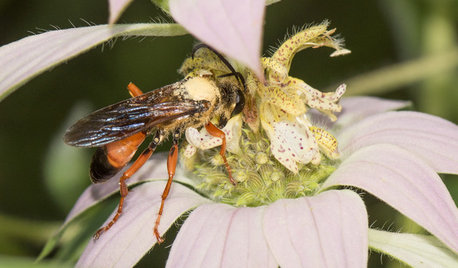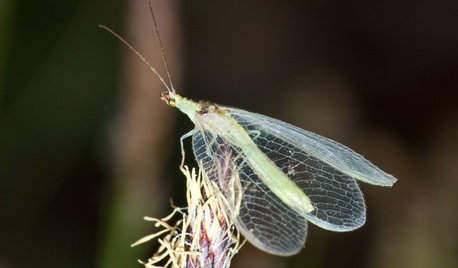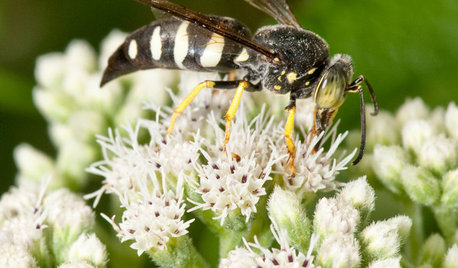Cecropias are emerging from their cocoons!
butterflymomok
13 years ago
Related Stories

DECORATING GUIDES8 Reasons to Jump Off the DIY Bandwagon
You heard right. Stop beating yourself up for not making stuff yourself, and start seeing the bright side of buying from others
Full Story
GARDENING GUIDESGreat Golden Digger Wasp: A Beneficial Flower-Visiting Insect
Introducing the great golden digger wasp, a colorful pollinator that also hunts foliage-eating insects
Full Story
COLORHow to Layer Tones of Gray for Depth and Harmony
Use texture, pattern, contrast and more to create a subtle, sophisticated look with this popular color
Full Story
BATHROOM DESIGNSmall-Bathroom Secret: Free Up Space With a Wall-Mounted Sink
Make a tiny bath or powder room feel more spacious by swapping a clunky vanity for a pared-down basin off the floor
Full Story
CONTEMPORARY HOMESHouzz Tour: Remaking a Penthouse in a Gothic London Landmark
Step inside a renovated luxury apartment in London’s St. Pancras Chambers
Full Story
GARDENING GUIDESLook Out for Lacewings: Beneficial Insects Coming to a Garden Near You
Lacewings are delicate insects that produce alligator-like, hungry offspring that devour aphids and other garden pests
Full Story
GARDENING FOR BUTTERFLIESGardening for the Bees, and Why It’s a Good Thing
When you discover how hard bees work for our food supply, you may never garden without them in mind again
Full Story
GARDENING GUIDESWhat’s in a Name? See 6 Wildflowers That Aren’t ‘Weeds’ at All
Dispel the stereotypes of weeds and try these wildlife-supporting native wildflowers in your garden
Full Story
GARDENING GUIDESSand Wasps Keep True Bugs in Check and Help Pollinate Summer Flowers
Look for these solitary wasps nesting in sandy sites and foraging on flowers in July and August
Full Story
GARDENING GUIDES6 Steps to Creating Your Butterfly Garden
Encourage these fanciful winged beauties to visit your garden while helping restore their fragmented habitat
Full Story






MissSherry
runmede
Related Professionals
Fort Lee Landscape Architects & Landscape Designers · Montgomeryville Landscape Architects & Landscape Designers · Panama City Landscape Architects & Landscape Designers · Bowie Landscape Contractors · Brunswick Landscape Contractors · Lewisville Landscape Contractors · Newberg Landscape Contractors · Setauket-East Setauket Landscape Contractors · Madison Fence Contractors · Columbia Fence Contractors · Verona Fence Contractors · Fort Collins Window Contractors · Bay Village Window Contractors · Sarasota Window Contractors · The Villages Window ContractorsbutterflymomokOriginal Author
MissSherry
KC Clark - Zone 2012-6a OH
butterflymomokOriginal Author
MissSherry
butterflymomokOriginal Author
bernergrrl
MissSherry
ladobe
KC Clark - Zone 2012-6a OH
KC Clark - Zone 2012-6a OH
butterflymomokOriginal Author
ladobe
butterflymomokOriginal Author
rjj1
butterflymomokOriginal Author
KC Clark - Zone 2012-6a OH